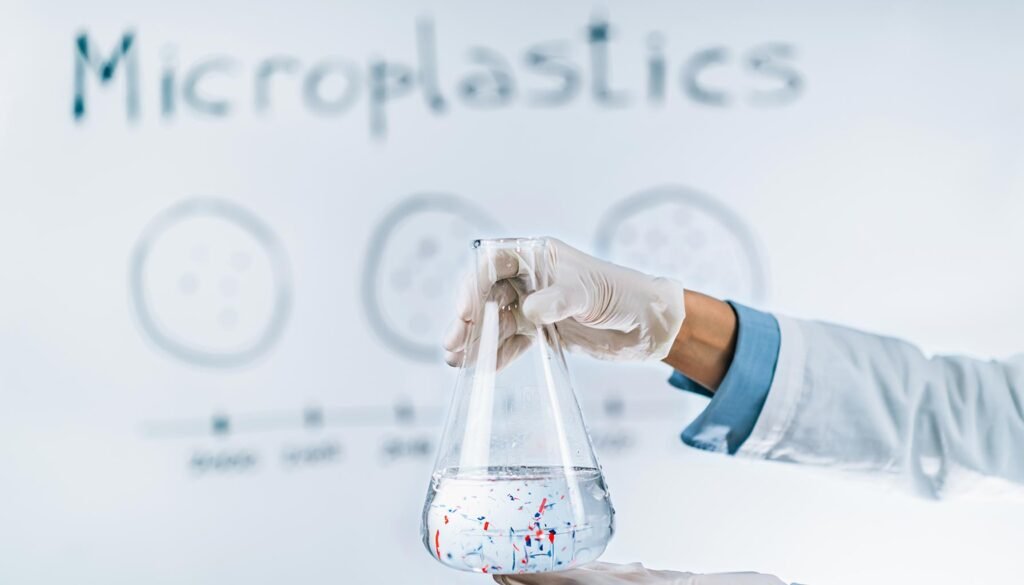
Unveiling the Alarming Truth About Nanoplastics in Bottled Water
In recent years, a groundbreaking study conducted by researchers at Columbia and Rutgers universities has shed light on a hidden danger lurking within the seemingly innocuous realm of bottled water. Nanoplastics, minuscule particles smaller than one micrometer, have been discovered in significant quantities, raising concerns about their potential health risks and environmental impact.
Nanoplastics: A Hidden Threat to Human Health and Ecosystems
Nanoplastics: The Offspring of Microplastics
While microplastics have garnered attention as a growing environmental concern, the focus has now shifted to even smaller particles known as nanoplastics. These tiny fragments, originating from the breakdown of larger plastics, have been found in diverse environments, including Arctic ice, drinking water, and food. What makes nanoplastics particularly worrisome is their ability to infiltrate the human bloodstream, cells, and even the brain, posing potential threats to both human health and ecosystems.
A Startling Discovery: High Concentrations of Nanoplastics in Bottled Water
New Research Techniques Uncover the Truth
The research conducted by the Columbia and Rutgers teams utilized a novel microscopic technique called stimulated Raman scattering microscopy. This advanced method allowed for the precise identification and counting of nanoplastics in bottled water, revealing an astonishing average of 240,000 fragments per liter. This number, 10 to 100 times higher than earlier estimates, paints a worrisome picture of the extent of nanoplastic contamination in this everyday beverage.
Beyond Microplastics: Nanoplastics’ Distinctive Threats
Nanoplastics’ Unique Invasion Route
Unlike their larger counterparts, nanoplastics have the capability to bypass the intestines and lungs, entering the bloodstream directly. From there, they can travel to various organs, including the heart and brain. This ability to invade individual cells and even cross the placenta raises significant concerns about their impact on human health.
Unraveling the Complexity of Nanoplastics in Bottled Water
Polyamide Surpasses PET
Intriguingly, the researchers discovered that polyamide, a type of nylon likely originating from water purification processes, was more prevalent in bottled water than polyethylene terephthalate (PET), which is commonly used in water bottles. This finding suggests that even the processes meant to purify water may contribute to the presence of nanoplastics.
The Enigmatic World of Unknown Nanoparticles
The study revealed that the seven types of plastics identified accounted for only about 10% of all the nanoparticles found in bottled water. This indicates that a vast array of unknown particles remains present in this beverage, underscoring the complexity of the nanoplastic issue.
Beyond Bottled Water: Exploring Nanoplastics in Various Environments
Expanding their research horizons, the team is now investigating nanoplastics in tap water and other potential sources of contamination. Collaborative efforts are underway to study nanoplastics in diverse environments, including Antarctic snow and human tissues, to gain a better understanding of their ecological and health impacts.
The Nanoplastic Predicament: A Global Challenge Demanding Action
In summary, the presence of nanoplastics in bottled water has unveiled a growing environmental and health hazard. With their potential to harm ecosystems and human health, understanding the behavior and impact of nanoplastics is of paramount importance. This issue calls for immediate and sustained action from individuals, industries, and governments worldwide to reduce plastic waste at the source, develop better filtration technologies, and promote public awareness about the dangers of plastic pollution.
Nanoplastics in Bottled Water: Exploring the Health Risks and Controversies
Recent research has ignited a debate regarding the presence of nanoplastics in bottled water and its potential health implications. While the findings are alarming, there is still much to uncover about these microscopic particles and their effects on human health.
Nanoplastics: The Silent Invaders of Our Bodies
Nanoplastics’ Intrusion Routes
Nanoplastics can enter our bodies through various exposure routes, including ingestion, inhalation, and skin contact. Their small size allows them to cross biological barriers, potentially reaching organs like the lungs, brain, and placenta. While the exact health risks are not fully understood, researchers have raised concerns about nanoplastics containing over 100 cancer-causing chemicals.
The Controversy Surrounding Nanoplastics in Drinking Water
The International Bottled Water Association’s Stance
The International Bottled Water Association emphasizes that there is currently no scientific consensus on the health effects of consuming nanoplastics. While the potential risks are a subject of concern, further research is needed to determine the full extent of the issue.
Understanding Nanoplastics: A Closer Look at Their Origins and Impact
Nanoplastics, measuring less than one micrometer in size, are derived from the breakdown of larger plastic debris. This transformation occurs over time due to factors such as sunlight exposure, physical abrasion, and biological degradation. However, nanoplastics can also originate from consumer products and industrial processes, making them a pervasive environmental concern.
The Perils of Nanoplastics in the Food Chain
Nanoplastics in Seafood and Food Items
Studies have shown that nanoplastics can be found in seafood, bottled water, and other food items. This contamination can occur during packaging, processing, or from environmental sources. The widespread distribution of nanoplastics raises concerns about their accumulation in the food chain, potentially harming a variety of organisms.
Responding to the Nanoplastic Crisis: Actions We Can Take
As we grapple with the presence of nanoplastics in our environment and daily lives, it’s essential to consider measures to mitigate their impact. Here are some steps we can take in response to this emerging issue:
Reduce Plastic Waste and Bottled Water Consumption
Opt for reusable water bottles and filtration systems to minimize plastic waste and potential exposure to nanoplastics.
Support Sustainable Water Sources
Invest in water conservation efforts and advocate for policies that protect clean water sources, reducing the need for bottled water.
D emand Transparency from Bottled Water Companies
Encourage bottled water manufacturers to disclose the source of their water and the measures taken to ensure its quality.
Stay Informed and Promote Awareness
Continuously follow research on nanoplastics and their potential health and environmental impacts. Share information to raise awareness about this critical issue.
In conclusion, while the discovery of nanoplastics in bottled water has raised concerns, further research is needed to fully understand their implications. Nonetheless, taking proactive steps towards reducing plastic waste and advocating for cleaner water sources is essential for a more sustainable and healthy future.
Source: Proceedings of the National Academy of Sciences
Read More latest Health stories here.


